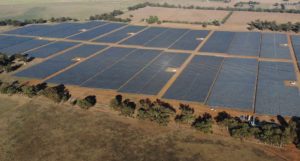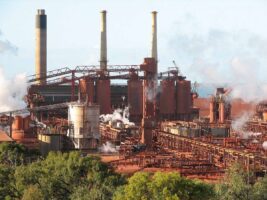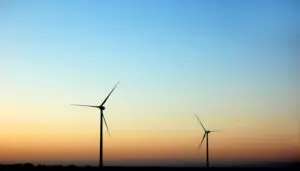Most people, businesses, the energy industry and even politicians now realise we are moving towards a low carbon energy future. What they don’t seem to realise is that fundamental shifts across the whole economy in business models and human experience are occurring.
Production is being reframed. Virtual services are replacing physical activity. Modular, distributed and diverse technologies are replacing large, centralised technologies.
Many of these changes are impacting on demand for energy, yet they are largely unrecognised by energy specialists.That’s why energy forecasters are struggling to predict energy trends.
The Australian Energy Market Operator’s forecasts have been adjusted downwards in recent years.
Their forecast scenarios show a ‘high’ demand trend more than 50% higher than the ‘low’ trend. And they are our best forecasters!
Production that used to occur in the manufacturing sector now occurs anywhere from the point of harvesting of a resource (which could be recovery of ‘waste’) to the point of delivery to a consumer.
Food processing on the farm or nearby is replacing large-scale processing at a large plant located where a cheap supply of gas was available. Micro-breweries, hot bread shops and in-store bakeries can out-compete large breweries and bakeries.
3D printers in office back rooms can replace traditional manufacturing plants.
Online shopping and virtual delivery of entertainment, health and education services are replacing physical movement, buildings and products. Data analytics and machine learning are driving new levels of accountability, optimisation and system management.
These kinds of changes have disruptive impacts on the energy system.
If developing countries continue to build using concrete and steel, 30% to 60% of our Paris global carbon budget will be used up providing those materials by 2050.
What used to be safe investments across business are now risky. And what used to be risky investments in emerging businesses are still risky at an individual level, but diversified investment in emerging sectors may be becoming safer.
Lumpy investments in projects that take several years to implement are now riskier than modular and incremental alternatives that can learn faster, deliver cash flow sooner and be located more flexibly.
These powerful trends are broadly consistent with a lower carbon economy. But they are reframing work, business, politics and daily life. They have implications for unions, workers and businesses.
There will be winners and losers. If governments fail to introduce adequate consumer rights, support for workers and economic transition strategies, the pain and tensions will be greater than necessary.

Materials, energy and carbon emissions
A significant part of the global energy and carbon footprint is due to demand for materials sourced from mining and energy-intensive processing. This has grown as population, wealth and economies have grown.
But things have to change. One study found that, if developing countries continue to build using concrete and steel, 30% to 60% of our Paris global carbon budget will be used up providing those materials by 2050.
My analysis of the Australian situation found that embodied energy in construction is now comparable to the energy used when heating and cooling those buildings. So building policy that focuses just on operating energy is failing to consider the bigger picture.
If we look beyond buildings to appliances and renewable energy, the situation is more complex. For most renewables, the energy payback period is now quite short.
For appliances, large improvements in operating energy efficiency mean that you can recover the impact of manufacturing the replacement fairly quickly. But increasing production can undermine the savings.
The life cycle climate impact of very efficient equipment can be very small in comparison with the products they replace. For example, Apple’s estimate of the life cycle emissions from an iPad is 87 kg of CO2 compared with 494 kg for a 21.5” iMac. But 70% of the iPad’s life cycle carbon impact is in production, compared with 49% for the iMac.
We must increase our focus on replacing physical activities with virtual services, dematerialisation, recovery/recycling/ reprocessing, life extension (through design, adapting, maintaining and renovating), reuse, and adoption of ‘enoughness’.
Just as efficiency and renewable energy undermine demand for traditional energy solutions, these changes undermine demand for traditional mining and resource processing, and the asset values of mineral resources and mines.
Prediction of future demand for materials is complicated by population and lifestyle trends. Inertia and the power of incumbent industries and cultures slow change. But innovation and cultural change can accelerate the process.
There will be winners and losers, and the losers have a lot to lose.
Miners must use their knowledge to underpin ‘mining’ of stocks of materials in existing landfills instead of new mineral deposits. The recovery and recycling industries must develop more sophisticated ways of extracting and enhancing value of materials from ‘wastes’.
And designers and businesses must create ways of delivering services using less materials, and shifting to use of recovered and recycled material, while improving durability and repairability.
Our ‘war on waste’ is in its early days.
Source: The Pears Report. First published in Renew magazine (no connection to RenewEconomy). Reproduced with permission of author.










